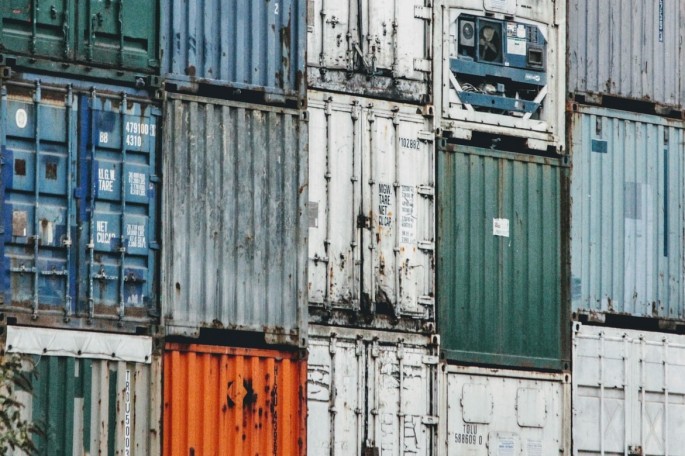It's no secret that maintaining cold chain temperature control is an integral aspect of global logistics, especially regarding the preservation and safety of perishable goods.
However, while this is already a complex task in fully industrialized countries, the difficulty increases tenfold in developing nations. Let's explore why that is the case.
What is cold chain logistics, and why is it important?
Due to the implications of improperly stored goods such as meat and seafood, medical supplies, and pharmaceuticals, regulator demands have become more stringent to protect the end consumer and to curtail waste production. Consequently, manufacturers need to be able to prove that their products are transported via a temperature-controlled supply chain.
The margin of error for this temperature control is different from product to product. However, the industry has seen a greater regulatory emphasis on products that need integrity between 2ºC and 8ºC, such as vaccines. In logistics, this temperature maintenance is referred to as "cold-chain."
The Covid-19 vaccines, mind you, often require sub-zero conditions, thereby upping the ante for "ultra cold chain" management
While in transit, all parties must be assured of these conditions, including the manufacturer, shipper, and wholesaler. Some factors that supply chain participants must take into account when planning their logistics include:
● The acceptable temperature and humidity range
● The margin of error for the temperature parameters
● Potential areas of risk
● Specific no-go actions that may compromise the integrity of the product
● The infrastructure of the intended destination
● The level of supply chain visibility
With that said, let's take a look at some of the primary reasons why it's more difficult to maintain temperature-controlled logistics in developing nations.
Laggardly cold-chain infrastructure in all its forms
Starting with the most apparent (and important) issue, most developing nations do not have the adequate infrastructure to support fully unbroken cold chain logistics. This is because most temperature-controlled logistics need to be finely tuned down to tee and meticulously planned.
As the infrastructure becomes less established, as is the case in developing nations, the number of variables increases dramatically. This leads to disruptions in the cold chain and can cause the integrity of products to diminish rapidly. Here are seven key reasons why.
1. The roads and transport links aren't as good
When the roads are bad, journeys will take significantly longer, since the drivers must go slower and take a less direct route. Secondly, potholes and other issues associated with poorly maintained roads increase the risk of not only extra shipment jostling but also vehicle breakdown, which poses a huge risk to temperature-controlled goods.
2. The electricity isn't as dependable
Any power outage in the cold chain is pretty much the worst-case scenario, since most cold chain technology relies on powered cooling systems to maintain the temperature of the goods in transit.
3. Developing countries are usually more rural
Delivery trucks' active powered cooling systems must be frequently recharged and refueled along the journey. The more rural the transit route is, the less chance for service stops and refueling, and the more travel time between warehouses with climate control.
4. A lack of skilled workers and specialist equipment
Gaining access to specialized equipment and the experts to operate them is one of the biggest challenges faced by manufacturers that rely on the cold chain. Unfortunately, there is very little local investment made by the governments of many developing nations, and farmers have limited capacity to invest in cold chain.
5. Low supply chain visibility
Full supply chain visibility is an immensely difficult feat to achieve even in nations like the USA and the UK. In fact, only 6% of companies report full visibility, so you can imagine how hard this becomes in developing nations. This lack of visibility is mainly caused by a lack of monitoring at the package level, which keeps manufacturers in the dark as per the status of their goods while they are in transit. Thus, many manufacturers are unaware of when their goods have been compromised until it is too late, since they have limited access to analytics.
6. Theft and pilferage
Supply chain theft is on the rise, and it's no surprise to learn that many of these robberies and pilferage occur in developing nations, where the gaps between richer and poorer classes are more pronounced. As more temperature-sensitive products hit the road, cold chains have become high-value targets for cargo thieves, which is a huge cause for concern for manufacturers and buyers.
7. High temperatures and humidity
As temperatures and humidity levels rise due to climate change, it becomes increasingly difficult to maintain the cold chain. On top of this, the hotter it becomes, and the more a company and a population has to battle against the elements, the more costly the logical operations become.
A look to the future
The growth of the cold chain capacity in developing regions varies from country to country. According to research by Elhadi M. Yahia from the Autonomous University of Querétaro, Mexico, the global cold chain capacity in the last decade has increased substantially. It more than doubled in India in the developing world, increased 66 percent in Brazil, and 20 percent in China.
In other populous countries such as South Africa, Mexico and Kenya, the cold chain is concentrated in the urban centers and transport terminals, such as airports. However, outside of these areas, it is virtually non-existent, which causes huge issues when transporting temperature-sensitive goods such as food, and of course, vaccines.
Looking to the future, more investments must be made into the local infrastructure of these developing nations if companies are expected to risk transiting their goods through their lands.



























